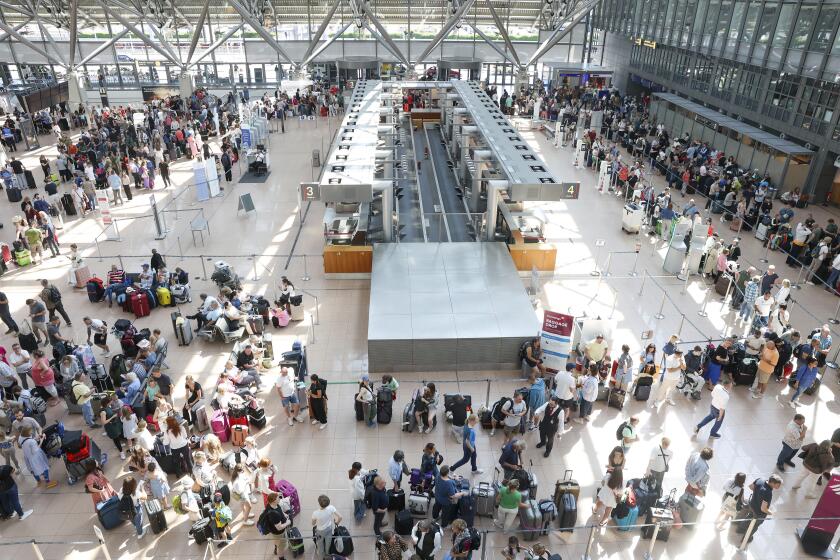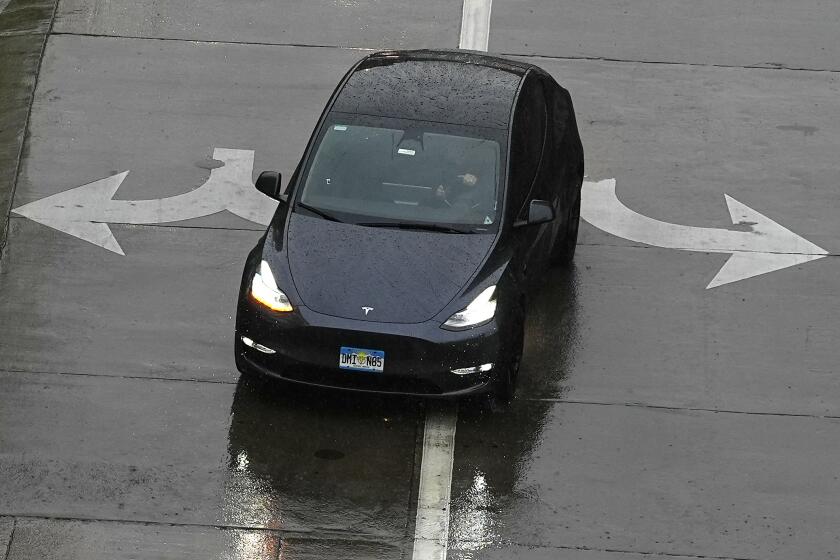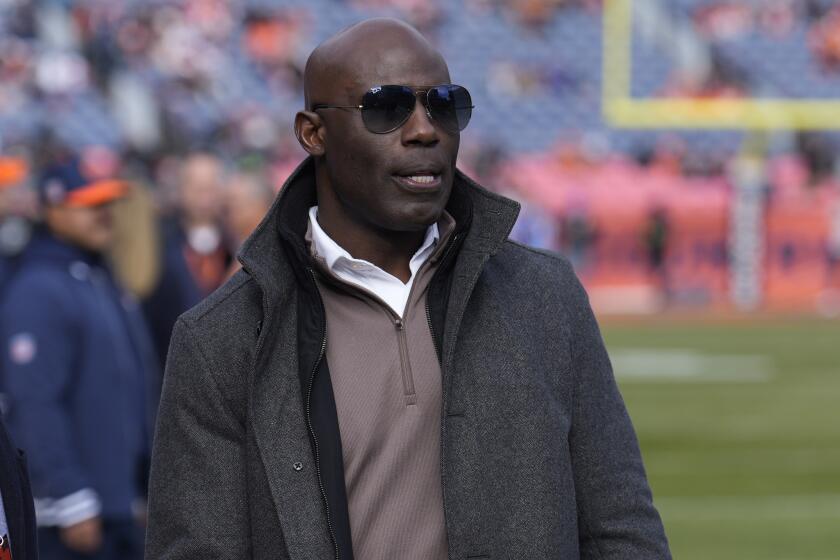Historic Pasadena Freeway
Re “Pasadena Freeway Is Headed for Immortality,” July 22: If the engineers wish to rhapsodize over the quaint historic qualities of the Pasadena Freeway (110), they should scrape up the whole miserable concrete mess and put it in the freeway museum. That highway has been obsolete for 25 years: It’s dangerous and inadequate. The transition from the 110 north to the I-5 north (with its counterpart from the I-5 south to the 110 south) is one of the worst freeway bottlenecks in the state. Caltrans’ failure to upgrade the freeway demonstrates incompetence and denial at the highest level. It’s a disgrace.
WILLIAM LEIDENTHAL
Los Angeles
*
The Pasadena Freeway is, indeed, a monument to the engineers who designed and built it nearly 60 years ago. It remains an example, obviously lost on today’s Caltrans officials, of what a freeway should be: accessible, scenic and appropriate in scale.
THOMAS KEISER
Arcadia
*
While the freeway was originally named the Arroyo Seco Parkway, many of us referred to it as the speedway.
Also I must take exception to two other claims made in the report: First, that “one can travel with the assurance that a car will not suddenly emerge from a side street.” Even today that cannot be assured, since three or four entrances to the freeway still have stop signs and no free lanes for entering cars. Second, that “engineers created specially banked curves for the divided highway.” Today’s drivers traveling 55 mph or more are well aware that the safe and sleek engineered curves of the modern freeway were not available for the unique 1940 concrete creation called the Arroyo Seco Parkway.
CHARLES R. BARR
Upland
*
I enjoyed your article regarding the Arroyo Seco Parkway’s historic status. Predating that freeway’s history, the true origins go back to over 100 years ago, when a group of businessmen and investors (led by Pasadena Mayor Horace Dobbins and California Gov. Henry Markham) started California Cycleway Co. for the construction of an elevated wooden bicycle tollway and began construction of the cycleway from Pasadena to Los Angeles. The grand opening of the cycleway was on Jan. 1, 1900.
The project’s completion, however, was blocked by Henry Huntington, when he realized that the cycleway would be faster than his Red Car trolleys and endanger his growing transportation monopoly.
The right of way for the cycleway was subsequently sold and used for the construction of the Pasadena Freeway. Who then would have thought that rush-hour speeds on the Pasadena Freeway would eventually drop to bicycle speeds?
DENNIS CROWLEY
Pasadena
More to Read
Sign up for Essential California
The most important California stories and recommendations in your inbox every morning.
You may occasionally receive promotional content from the Los Angeles Times.






